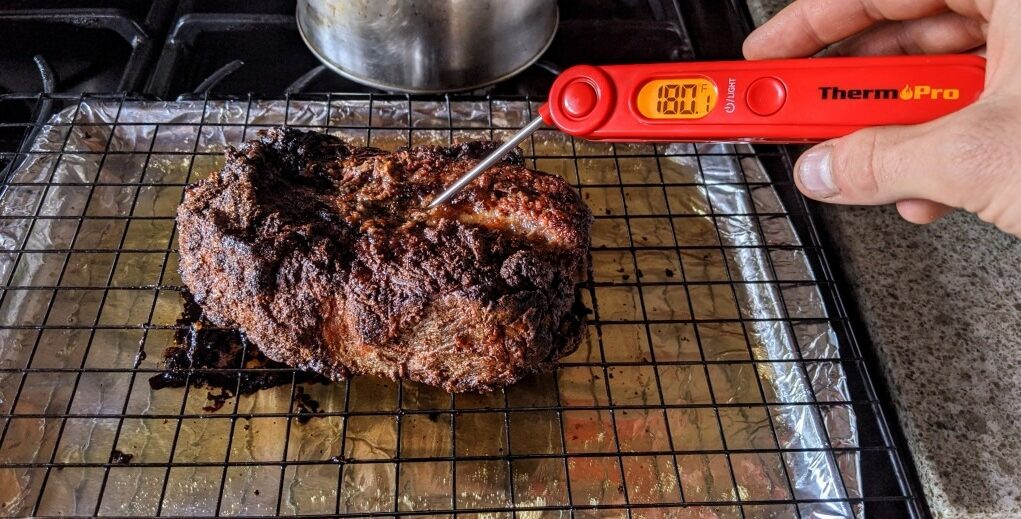Ensuring that your meat thermometer is accurate is crucial for safe and delicious cooking. A properly calibrated thermometer ensures that your meat reaches the desired temperature, ensuring both safety and optimal taste. This article will guide you through the steps needed to make sure your meat thermometer is accurate, giving you confidence in your kitchen endeavors.

Why Accuracy in Meat Thermometers is Important
Being certain about the accuracy of your meat thermometer matters because it directly impacts food safety and the quality of your meals. An accurate thermometer helps you avoid undercooked meat, which can be a health hazard, and overcooked meat, which can be dry and unpalatable.
Types of Meat Thermometers
There are several types of meat thermometers, each with its own advantages. Understanding these will help you choose the best one for your needs.
Digital Instant-Read Thermometers
Digital instant-read thermometers provide quick and accurate readings. They are great for checking the temperature at different points during cooking.
Dial Oven-Safe Thermometers
Dial oven-safe thermometers are designed to remain in the meat while it cooks. They usually take longer to provide a reading but are very reliable.
Wireless Remote Thermometers
These thermometers use wireless technology to send temperature readings to a remote device, allowing you to monitor cooking progress without being near the oven or grill.

Steps to Ensure Your Meat Thermometer is Accurate
1. The Ice Water Test
This is one of the simplest methods to check the accuracy of your meat thermometer. Fill a glass with ice water and insert the thermometer. It should read 32F (0C). If not, note the deviation and adjust accordingly.
2. The Boiling Water Test
Boil water in a pot and insert your thermometer. It should read 212F (100C) at sea level. If you’re at a higher altitude, the boiling point will be slightly lower. Again, note any deviation and adjust.
3. Calibrating Your Thermometer
Most digital thermometers come with a calibration feature. Follow the manufacturers instructions to adjust the readings based on your tests.
4. Regular Maintenance
Regularly check your thermometer’s accuracy and clean it after each use to ensure it stays reliable over time.
Common Issues and Troubleshooting
If your thermometer isn’t providing accurate readings, consider these common issues:
Battery Problems
For digital thermometers, weak or old batteries can cause inaccurate readings. Replace them as needed.
Probe Damage
Inspect the probe for any signs of damage. A bent or damaged probe can affect accuracy.
Environmental Factors
Extreme temperatures or high humidity can sometimes impact the accuracy of your readings. Ensure that you’re using the thermometer in appropriate environments.
Useful Tips for Using Meat Thermometers
Here are some additional tips to ensure you get the most accurate readings from your meat thermometer:
Insert Properly
Make sure to insert the thermometer into the thickest part of the meat, avoiding bones and fat for the most accurate reading.
Allow Time for Reading
Whether digital or dial, give your thermometer enough time to stabilize and provide a reading.
Recalibrate Often
Regular recalibration can make a big difference in accuracy.
Why Choose a Reliable Meat Thermometer?
A reliable meat thermometer can take your cooking to the next level. It ensures that your meals are cooked to perfection, providing both safety and flavor.
Recommended Meat Thermometers
ThermoPro TP03 Digital Instant-Read Thermometer
This thermometer is known for its quick and accurate readings. Its affordable and easy to use, making it a popular choice among both home cooks and professionals.
OXO Good Grips Chef’s Precision Analog Instant Read Thermometer
A highly reliable analog option, this thermometer provides consistent accuracy and lasts a long time with proper care.
Weber iGrill 2 Thermometer
This wireless thermometer allows you to monitor your meat’s temperature remotely, providing convenience and precision.
Conclusion
Ensuring your meat thermometer is accurate is a vital step in preparing safe and delicious meals. By following these procedures and tips, you can cook with confidence, knowing that your thermometer is giving you precise readings. Happy cooking!
FAQ
How often should I check the accuracy of my meat thermometer?
Its good practice to check the accuracy of your thermometer every few months, or whenever you suspect it might be giving incorrect readings.
Can I use a meat thermometer for other types of food?
Yes, meat thermometers can be used to check the temperature of any food youre cooking that requires a specific internal temperature.
What should I do if my thermometer is not accurate after calibration?
If your thermometer remains inaccurate after calibration, it might be time to replace it. Using a faulty thermometer can be risky and lead to improperly cooked food. For more detailed information on using a meat thermometer, you can check this use meat thermometer guide.
As an Amazon Associate, I earn from qualifying purchases.








